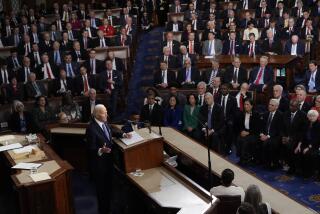Report indicates that Hurricane Sandy slowed job growth
WASHINGTON -- The U.S. job market looks like it took a big but not devastating blow last month from Hurricane Sandy.
In a report ahead of Friday’s government release of monthly employment statistics, the payroll processor Automatic Data Processing Inc. said the U.S. economy added 118,000 private-sector jobs in November.
Although that’s down from the 158,000 new private-sector jobs that ADP estimated for October, that growth didn’t fall more sharply lends hope that the severe storms that wreaked havoc in the Northeast in late October didn’t slam the employment market as hard as some people had feared.
Some analysts have been predicting that the Labor Department’s report Friday will show total job growth of less than 100,000 for November. According to the agency’s report last month, the U.S. in October added a solid 184,000 jobs in the private sector and saw a drop of 13,000 in government payrolls.
October’s overall job growth of 171,000 jobs was close to the monthly average since July, reflecting a pickup from the hiring slump earlier in the spring.
ADP estimates monthly job-growth numbers by analyzing payroll data for about 23 million workers. For much of this year, its tally has overshot government’s statistics, but with the October report, ADP incorporated more data and tweaked its methodology as it joined with the economic research firm Moody’s Analytics in generating the monthly estimates.
Mark Zandi, chief economist at Moody’s Analytics, said Hurricane Sandy wiped out an estimated 86,000 jobs from private-sector payrolls last month, meaning that the economy would have added more than 200,000 jobs in November without the storms.
Given the damage and disruption to manufacturing, retailing and restaurants, among other businesses, he said, “the job market turned in a good performance during the month.”
Zandi added in a news release: “This is especially impressive given the uncertainty created by the presidential election and the fast-approaching fiscal cliff” -- the automatic tax hikes and fiscal spending cuts scheduled for the start of next year. “Businesses appear to be holding firm on their hiring and firing decisions.”
According to ADP’s report, construction firms added 23,000 jobs last month, a promising sign that the housing recovery is starting to create more jobs. The trade and transportation sectors, which include retailers, boosted their payrolls by 22,000. Manufacturing, however, shed 16,000 jobs last month, some of that most likely the result of the storms.
Though somewhat encouraged by Wednesday’s report, some private economists said they still expect the government Friday to issue weaker job numbers than the ADP estimates, in part because of concerns about future tax and spending policies.
“The looming fiscal cliff is probably having a growing impact on employment as well,” said Paul Ashworth, an economist at Capital Economics. He said he expects the Labor Department report to show a more modest increase of 75,000 jobs for November.
One silver lining is that most of the storm-related drop in jobs is temporary. And if policymakers can avert the fiscal cliff, analysts said, it could give a good boost to job growth early next year.
ALSO:
GDP is revised higher, but large risks threaten outlook
Hurricane Sandy pushed U.S. air travel down in October, report says
Manufacturing sector slips in November; Superstorm Sandy to blame?







